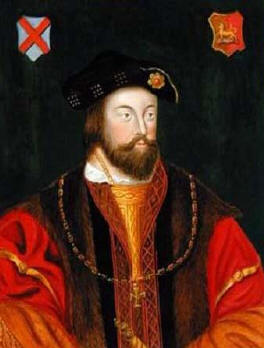|
Thomas "Silken Thomas" FitzGerald, 10th Earl of Kildare
In July Thomas FitzGerald and his followers attacked Dublin Castle, but the army was routed. He ordered the execution of Archbishop Alen at Clontarf who had tried to mediate; this lost him any support from the clergy. By this time his father had taken ill and died in London, and he had technically succeeded as tenth earl, but the Crown never confirmed his title. He retreated to his stronghold at Maynooth, County Kildare, but in March 1535 this was taken by an English force under Sir William Skeffington by bribing a guard, while Thomas was absent gathering reinforcements to relieve it. The surrendered garrison was put to death, which was known as the "Maynooth Pardon". Thomas had wrongly assumed that his cause would attract overwhelming support, in particular from Catholics opposed to Henry VIII’s English Reformation. In July Lord Leonard Grey arrived from England as Lord Deputy of Ireland; Fitzgerald, seeing his army melting away and his allies submitting one by one, asked pardon for his offences. He was still a formidable opponent, and Grey, wishing to avoid a prolonged conflict, guaranteed his personal safety and persuaded him to submit unconditionally to the king’s mercy. In October 1535 he was sent as a prisoner to the Tower. Despite Grey’s guarantee he was executed, with his five uncles, at Tyburn, 3 February 1537. According to G.G. Nichols, (ed.) in The Chronicle of the Gray Friars of London (London, 1852) page 39, the five uncles were "...draune from the Tower in to Tyborne, and there alle hongyd and hedded and quartered, save the Lord Thomas for he was but hongyd and hedded and his body buried at the Crost Freeres in the qwere...Thomas FitzGerald has an extensive biographical entry in the Dictionary of National Biography. |
